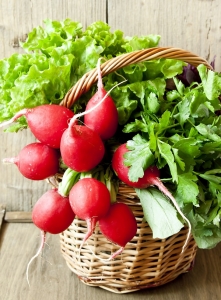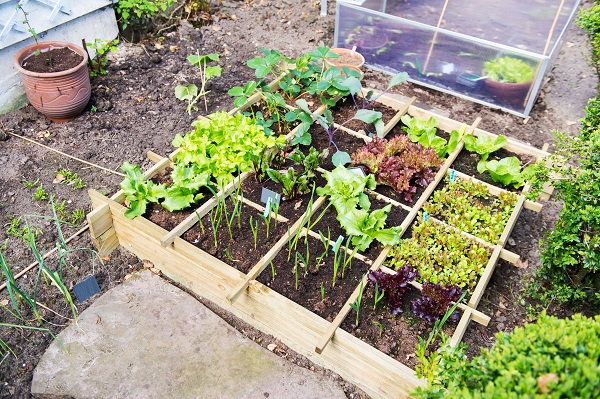
Radishes and leafy greens are great additions to a fall garden. Established herbs such as parsley continue to flourish in the cooler weather.
In many parts of the country, August is the time to start a fall vegetable garden. Many cool-season vegetables, such as carrots, broccoli, cauliflower and Brussels sprouts, produce their best flavor when they mature during cool weather. Vegetables such as lettuce, arugula and spinach love the cooler temperatures. Even if your fall garden consists only of a few containers with a mix of lettuce, spinach and arugula, it’s worth the fresh taste and satisfaction of growing some of your own food!
Vegetables that have a 60 to 80 day maturity cycle should be planted in early August. If you’re planting quick maturing vegetables such as turnips and leafy greens, you may want to wait until September. The times may vary slightly, so adjust planting dates for your specific location. Find out the average date of the first killing frost in the fall in your area. Count backwards from the frost date, using the number of days to maturity to determine the best time to plant in your area.
Till the soil to at least 6 to 8 inches. Apply 1 to 2 pounds of fertilizer such as 10-10-10 for every 100 square feet of bed space. Thoroughly incorporate the fertilizer.
Planting seeds rather than transplants is often done in the fall. Make sure to water the seeds regularly to keep them moist to help them germinate and to grow. Do not allow new plants to dry out.
Vegetables to consider this fall . . . and days to maturity
Asparagus – 2 years
Beets – 55 to 60
Broccoli – 70 to 80
Brussels sprouts – 90 to 100
Cabbage (plants) – 70 to 80
Carrots – 85 to 95
Cauliflower – 55 to 65
Collards – 60 to 100
Cucumbers – 40 to 50
Kale – 40 to 50
Lettuce (leaf) – 70 to 85
Mustard – 30 to 40
Onions (sets or plants) – 60 to 80
Radishes – 25 to 30
Spinach – 50 to 60
Turnips – 55 to 60

